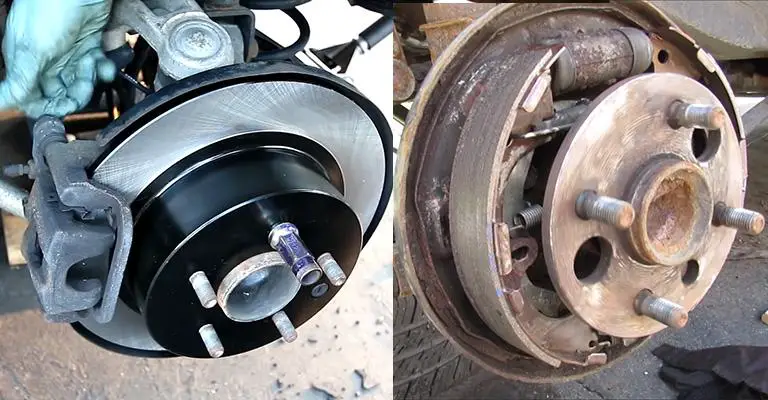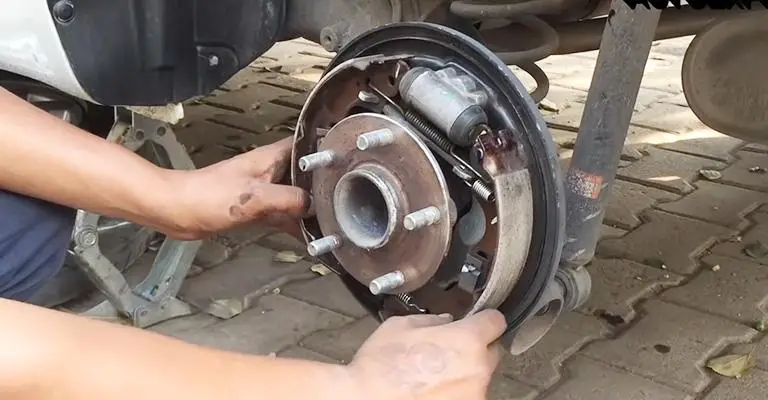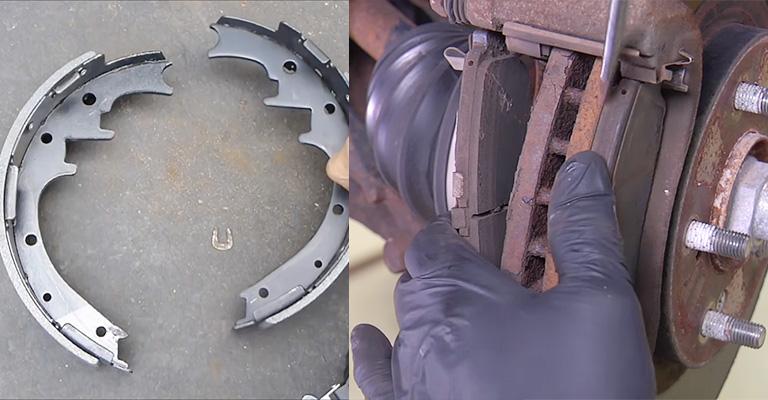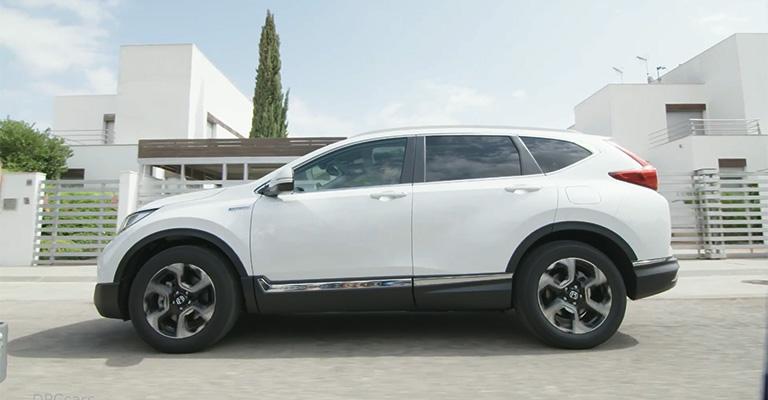Brake pads and brake drums are two important components of a vehicle’s braking system, but they function differently and are used in different braking systems.
Let’s take a closer look at what brake pads and brake drums are, how they work, and their key differences.
Understanding the differences between these two components can help you make informed decisions about your vehicle’s braking system and ensure that it is functioning properly.
Brake pads are friction material that is mounted on a metal backing plate and are located inside the caliper of a disc brake system. When the brake pedal is pressed, the caliper squeezes the brake pads against the rotor and slows the vehicle down.
Brake drums, on the other hand, are part of a drum brake system. They are cylindrical components located inside the wheel and connected to the wheel hub.
When the brake pedal is pressed, brake shoes inside the drum expand outward, pressing against the inner surface of the drum to slow the vehicle down.
Both brake pads and brake drums are important components of a vehicle’s braking system, but they work in different ways and are used in various braking systems.
Disc brakes are generally considered more efficient and effective than drum brakes, as they can dissipate heat more effectively and provide more consistent braking performance. However, drum brakes are still used in many vehicles, particularly on the rear wheels, due to their simplicity and low cost.

Contents
Brake Shoes & How Are They Different From Pads
It is important to note that brake shoes differ from brake pads in their role in certain braking systems. The importance of brake shoes and how they differ from brake pads are explored in this article.
What Are Brake Shoes

Even though brake pads and brake shoes perform similar functions, they aren’t the same. The brake pads in a disc brake system are part of the system.
Disc brake systems generate friction by squeezing brake pads against rotor discs, hence the word “disc.” The brake pads squeezing against the rotor generate friction that stops the vehicle.
Drum brake systems include brake shoes. Unlike traditional brake pads, brake shoes are crescent-shaped and have a rough surface on one side.
They are located inside brake drums. When you press the brake pedal, the brake shoes are forced outward, pushing against the brake drum and causing the wheel to slow down.
Modern vehicles have become less common with drum brakes and brake shoes, remnants of an older braking system.
It is true, however, that some vehicle models come equipped with drum brakes on the rear wheels because they are more affordable to manufacture.
Brake Shoes Vs. Brake Pads

A disc brake is the most common braking system used on modern vehicles. Some vehicles have drum brakes at the rear and disc brakes at the front to reduce manufacturing costs.
As a result, disc brakes are usually installed on these vehicles’ front wheels since they can handle more stopping force. You’ll find more differences between the brake shoe and brake pad systems.
Life Expectancy
Brake shoes can outlast brake pads because of their location within a braking system. Since brake shoes are located at the back of the vehicle, they may last longer because more force isn’t put on them.
As well as protecting the brake shoes from rust, dirt, and corrosion, the brake drum houses them.
If dirt or debris is deposited in the brake drum, it may become trapped, causing brake shoes to wear out sooner.
As opposed to brake pads, which are more exposed to the elements, road conditions, and potential debris, brake pads are more likely to deteriorate over time.
As a result of this exposure, the pads wipe dirt and debris off the rotors when the brakes are engaged, which extends the life of the brake pads and rotors.
Direction Of Braking Force

Different brake shoes and brake pads work in different directions. By pushing outward, brake shoes stop cars, while brake pads stop them by moving closer together.
Instead of being positioned inside the brake drum, brake pads are positioned around a rotor disc. Calipers squeeze brake pads together so they press against the rotor disc to slow the wheels down and stop the car.
Amount Of Stopping Power
The force required to stop the vehicle is another way brake shoes and pads differ.
However, brake shoes on a disc brake system typically don’t offer as much stopping power as brake pads because they have larger surfaces of rough material to create friction.
There is no doubt that disc brakes provide a much better-stopping power than drum brakes, thus allowing a faster and shorter stopping distance than drum brakes on a given vehicle.
Service
The enclosed design of brake shoes makes them more corrosion resistant. Despite this, drum brakes are complex systems, which makes replacing brake shoes more difficult and time-consuming than replacing brake pads.
It is these vulnerabilities that make brake pads potentially susceptible to corrosion, but it is also what makes them more accessible.
A brake pad or brake shoe can wear out like other vehicle parts. It is usually simpler and faster to access brake pads during brake repair, while it can take longer to access brake shoes.
Additionally, brake shoes may need adjustments as they wear, so they keep proper contact with the drums.
When To Replace Brake Shoes?
There is no doubt that brake shoes may not require service as frequently as brake pads, but they will not last forever.
The same holds for brake shoes, which need to be changed regularly to prevent brake problems or, worse, the need for brake replacements.
Whether you have disc brakes or drum brakes, your driving habits, road conditions, and weather can all impact the life expectancy of your brake components.
When Should You Replace Your Brake Drums?
Disc brakes have grown significantly in recent years compared to drum brakes. Most people have little or no knowledge about how drum brakes work or when they should be replaced.
It is common for brake drums and brake shoes to wear out as they become thinner. In the end, they will need maintenance due to wear and tear. In addition to the wheel cylinders, the seals on the cylinders wear out over time and leak.
Despite this, brake drums last 100K to 150K miles and are relatively easy to maintain. However, it is necessary to inspect and service the parts inside the drum more often.
Final Words
No friction material is used in drum brakes in the form of brake pads. Drum brake systems use pistons to move brake shoes against a rotating drum inside a wheel cylinder. As a result of this contact, the rotor, and drum of your vehicle slow down and stop rotating, bringing it to a complete stop.
